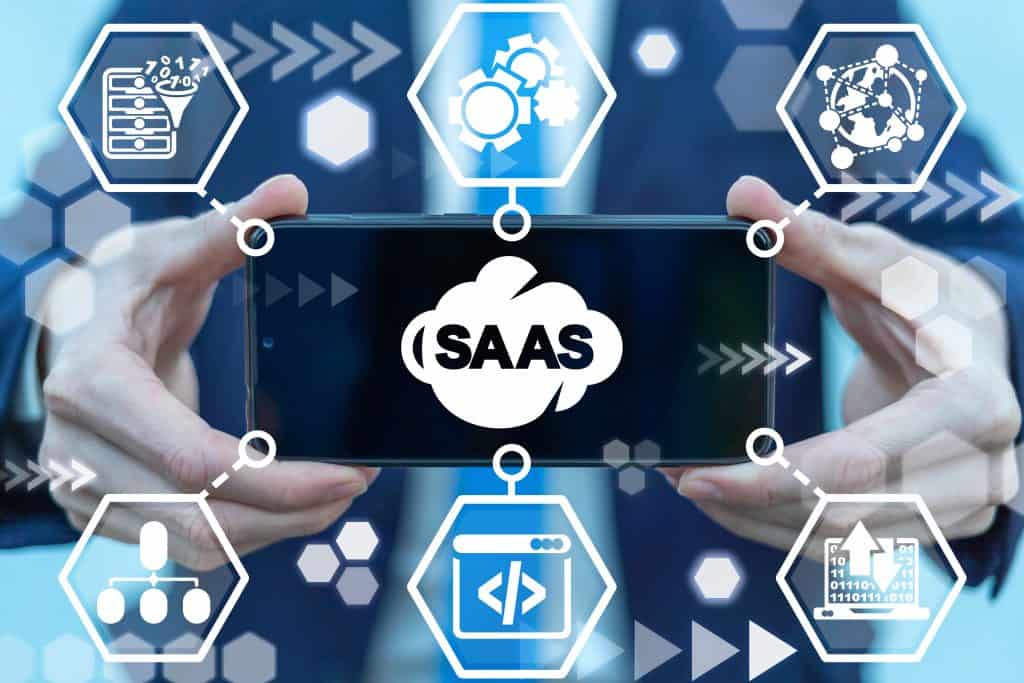4 Types of SaaS Billing Systems
Consider how customers are interacting with your SaaS products. They choose the plans and the payment methods. The billing information must then be collected and charged. Lastly, their subscriber data must be stored and backed up to allow businesses to charge monthly and manage things like upgrades, downgrades, and discounts. All of this combines the different systems into one seamless process, which happens in the background automatically. Below is a brief overview of a number of the different systems.

1) SaaS analytics (optional but recommended)
The final piece of software, optional yet highly suggested, is an analytics tool on SaaS. Statistical tools in SaaS can integrate seamlessly with subscription management. Your subscription management platform can store tons of data but is often not so good for managing it and presenting it to you for analysis. SaaS analytics solutions address these gaps. These tools enable an analysis of the metrics, MRR, CRUCK, and churn that is vital for the growth of SaaS products.
2) Subscription management
Subscription management allows you to charge customers billing information each month. Whenever you make a unique sale on a site, they charge you once. The SaaS customer can,
however, pay monthly, yearly, and any payment cycle. Subscription management software can manage these processes. Recurly provides a simple solution to manage subscription management with SaaS software.
3) Merchant account
In merchant accounts, you can make a payment by transferring money from a payment processor to your account. You say, “hey, I want a subscription”. The merchant account says Cool – you could use this money. Usually, your payments gateway provider provides merchant accounts, so that’s not a problem for you. Stripe and PayPro Global also offer payment gateways and merchant accounts.
4) Payment gateway
A payment gateway is an electronic system allowing customers to make secure payments. The payment gateway sends your customer the amount they need from the payment card to their credit card. PayPal and Stripe are two such payment gateways.
7 Hidden Challenges of Selling SaaS
Is it a problem for software companies to offer services? Behind every requirement we mentioned are numerous complex things. To convert, it’s essential to optimize the billing system for each of your clients, no matter where the customer lives, and this includes the introduction of new cryptocurrencies. Fees, retries, and dunning are more difficult for SMEs with growing revenues.

1) The total cost ends up much higher than what you were planning
Scaling is hard at times. As your product develops, it requires that everything on it grows as fast as your product. You have to build all of the necessary components to provide new payment systems for expanding the market or for new geography. The following significant cost comes in — a cost often overlooked by the CEO to build the system — opportunity costs. Instead of focusing on your product differentiation and your value proposition, your teams will focus on managing and maintaining each of your revenue delivery components.
2) You will need more than just one payment processor
When it comes to payment processors, you should consider adding specialized tools. It is important to choose several payment processors to meet the needs of a business. When converting, you want your customers to be happy and streamlined in your buying process. The company also supports a customer’s preference of payment method, currency, and geographical location. The total number of payment processors does not meet the criteria listed.
3) Your revenue delivery will need to evolve along with your product
There are no single subscription payment systems in the product lifecycle. It’s not a simple process. Your product can evolve, as does your overall business model. For example, larger organizations will have additional support for introducing new products and services and product offerings. Your entire revenue stream will change under these changes, so your system must adapt to this change.
4) You manage the tax overhead, plus full liability
It’s not only an attempt to calculate and charge tax for a particular buyer wherever a buyer is on the earth; it’s also an obligation to register for taxation. Most of these tools don’t provide any insurance for this. You can always use tools to indemnify yourself from the risks of making a return wrong for the best possible outcome. This could mean hiring tax experts for yourself.
5) User experience
The SaaS industry must do its best the retention of customers. A poorly designed interface or a lack of easy payment options frustrates customers. With subscriber models, accepting credit card payments is complicated, and there are many opportunities for the payment
process to be wrong. At the checkout, the customer’s payment information is passed through an online payment processing system. It is collected via an online payment platform from merchants’ accounts.

6) Encryption and secure payments
SaaS organizations face the challenge of keeping customers’ data safe in the cloud. Moreover, these challenges extend to payments for users. Security and encryption in the payment of payments are essential in any organization. The patented CardSecure solution is supported with P2PE encryption backed by PCI standards and tokenization to remove sensitive information. It also helps improve customer safety and reduces the risk of data breaches and loss of information.
7) Failed transactions management
According to a report analyzed by the US Bank, 82% of the small businesses that failed were because they did not have adequate cash flow. The number and frequency of unreachable transaction costs will likely make a difference in the SaaS Business model. They may also cost time and money to resolve – even when not detected. As an entrepreneur, it is not practical to manually audit all the transactions in SaaS.
Frequently Asked Questions
What is SaaS payment?
Saas pricing model is subscription-driven, and the best method to collect recurring fees is direct debit and credit card processors. They both offer security flexibility as well as stress relief for both the customer and the company.
What is a payment processing system?
A payment processor is a company that handles transactions by credit card for businesses. It acts as the go-to intermediary between the various participants of the trade – usually the merchant and the customer.
What is SaaS subscription management?
Subscription management systems often referred to as recurring billing engines or subscription billing systems, are helpful in automating recurring revenue and subscriber subscription payments.
Caroline is doing her graduation in IT from the University of South California but keens to work as a freelance blogger. She loves to write on the latest information about IoT, technology, and business. She has innovative ideas and shares her experience with her readers.






![‘Frankenstein’ Review – Guillermo del Toro’s Definitive Look At The Nature And Nurture Of Monstrosity [TIFF 2025] ‘Frankenstein’ Review – Guillermo del Toro’s Definitive Look At The Nature And Nurture Of Monstrosity [TIFF 2025]](https://cdn.geekvibesnation.com/wp-media-folder-geek-vibes-nation/wp-content/uploads/2025/10/Frankenstein-175_PF_20240430_20377_R-300x200.jpg)